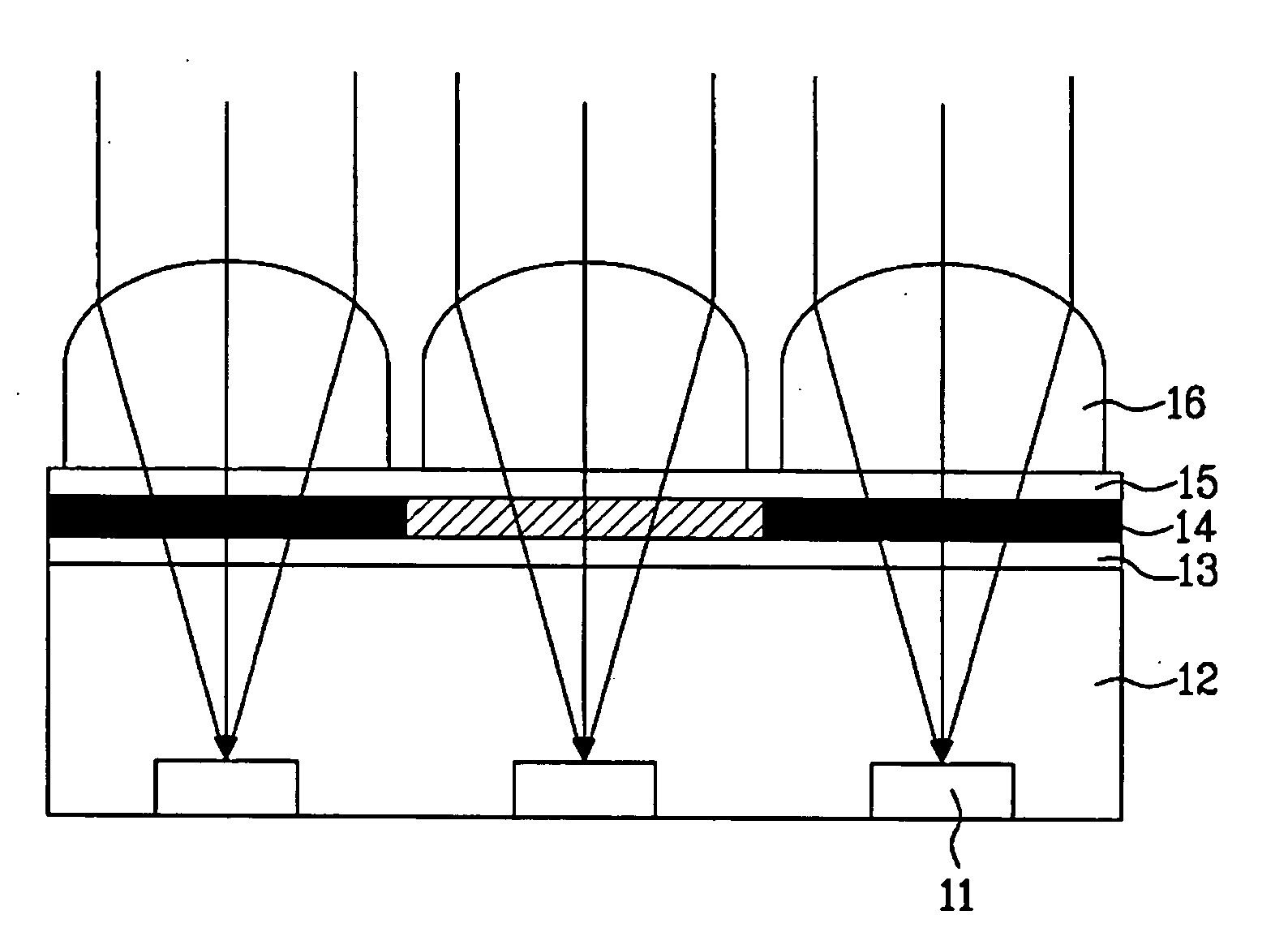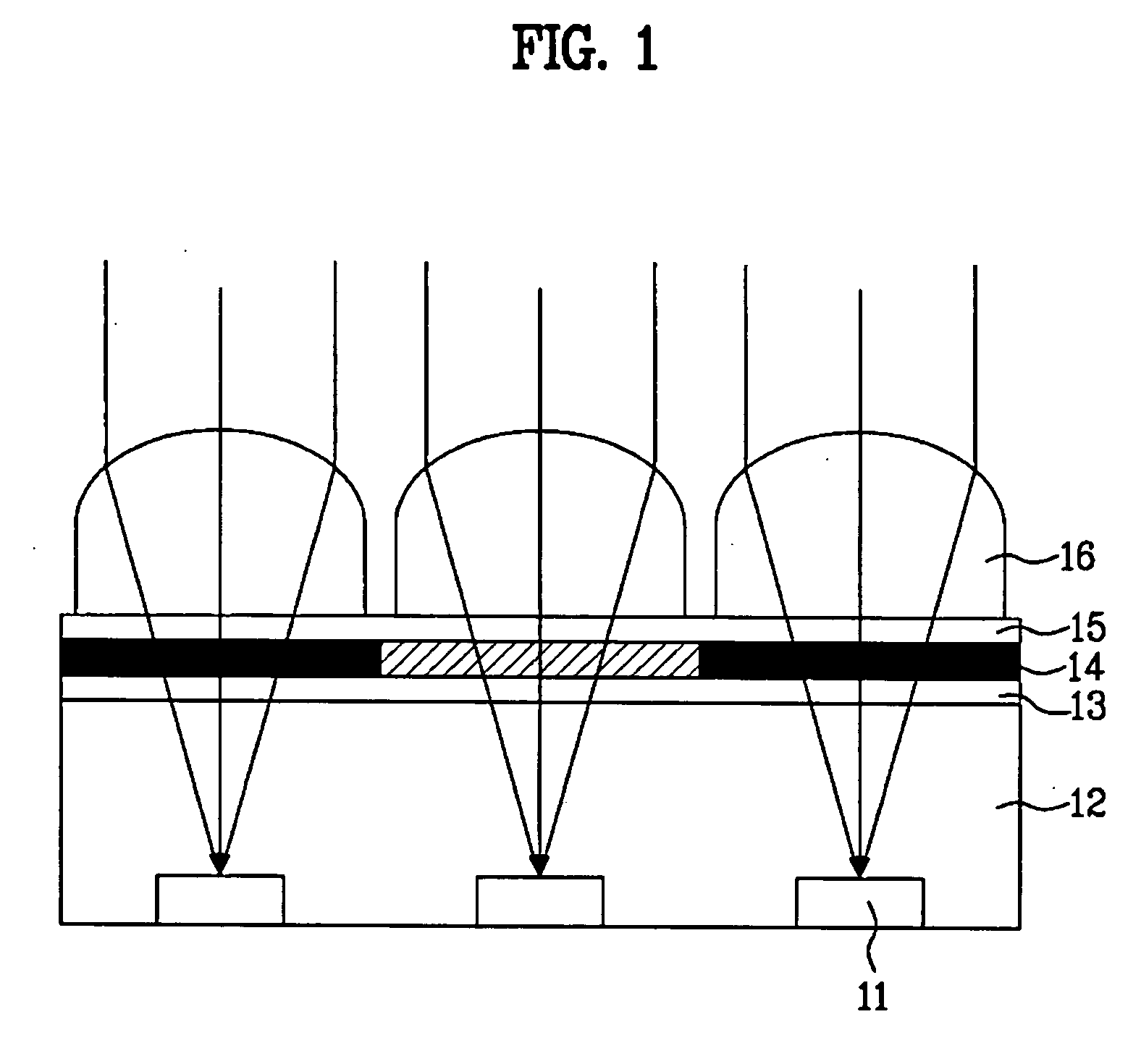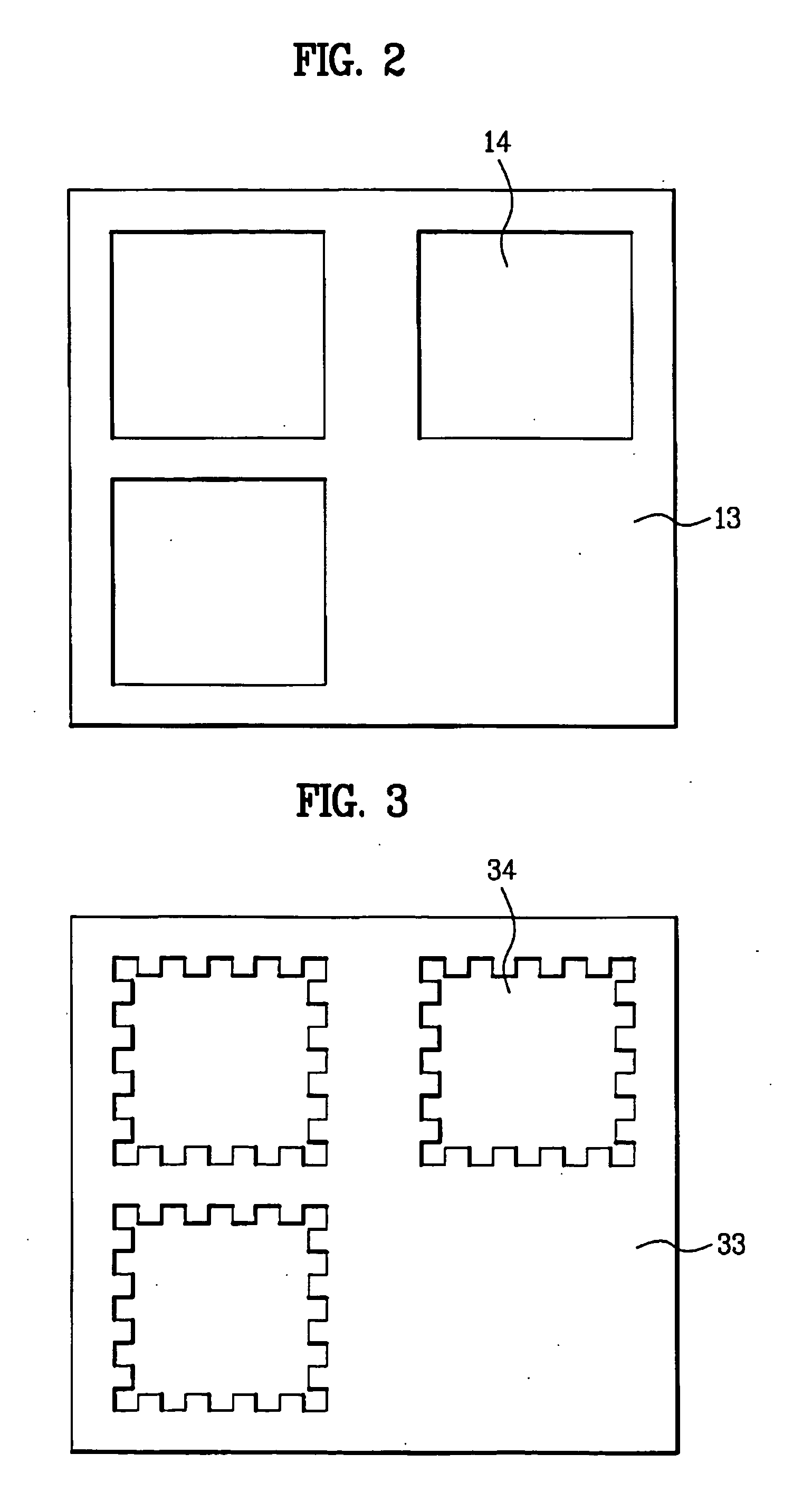Method of fabricating CMOS image sensor
a technology of image sensor and cmos, which is applied in the field of image sensor, can solve the problems of abnormal device operation, reduced light condensing efficiency, and less than optimal light condensing efficiency, and achieve the effects of curvature of microlens, facilitating reflow of microlens, and raising the light condensing efficiency of microlens
- Summary
- Abstract
- Description
- Claims
- Application Information
AI Technical Summary
Benefits of technology
Problems solved by technology
Method used
Image
Examples
Embodiment Construction
[0027] Reference will now be made in detail to the preferred embodiments of the present invention, examples of which are illustrated in the accompanying drawings. Wherever possible, like reference designations will be used throughout the drawings to refer to the same or similar parts.
[0028]FIG. 3 shows a color filter layer on an insulating interlayer in a CMOS image sensor according to the present invention. Here, a plurality of color filter layers 34 are formed on an insulating interlayer 33, uniformly spaced apart from each other. The spacing in one dimension (e.g., along a first axis in the plane of the page parallel with an edge of the color filter) may be independent of the spacing in another dimension (e.g., along a second axis in the plane of the page, perpendicular to the first axis). In this case, a boundary or edge of each of the color filter layers 34 is indented or “stepped.” Also, the insulating interlayer 33 may further comprise a protective and / or planarizing layer a...
PUM
 Login to View More
Login to View More Abstract
Description
Claims
Application Information
 Login to View More
Login to View More - R&D
- Intellectual Property
- Life Sciences
- Materials
- Tech Scout
- Unparalleled Data Quality
- Higher Quality Content
- 60% Fewer Hallucinations
Browse by: Latest US Patents, China's latest patents, Technical Efficacy Thesaurus, Application Domain, Technology Topic, Popular Technical Reports.
© 2025 PatSnap. All rights reserved.Legal|Privacy policy|Modern Slavery Act Transparency Statement|Sitemap|About US| Contact US: help@patsnap.com



